Work of art. Like lace.
I mean just look at it. This long strip of meat, coloured brown with flecks of red and full of holes.
I want this in a glass frame, hung up on my wall. I want to trace the rings and the lines, find out how and where it lay. Under what noon day sun, swimming in what bath of spices? I want to know if it likes its cousins of chicken and ram but if it considers itself king?
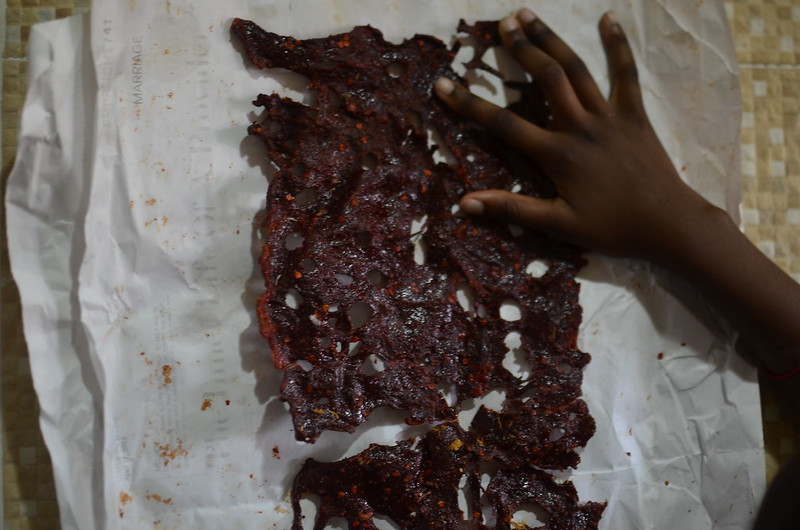
I want to extol the virtues of this piece of meat, sun-dried then baked, loving wrapped in paper soft, and light all the way from Northern Nigeria to the south, to me and my belly.
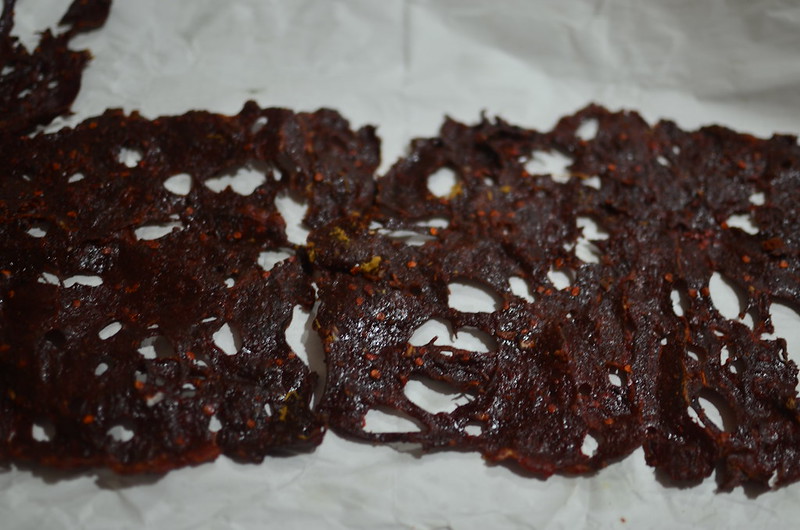
Traditional Kilishi is prepared using quality beef. It is prepared by skillfully cutting lean meat into thin sheets (1-2mm thick). These sheets of meat are sun dried on a raised wooden table covered in rush matting for about four hours. The sheets of meat are then immersed in a slurry of groundnut caked and seasonings including sugar, salt and paper (Igene, 1988). After immersion, the meat is returned to the rush matting to dry in the sun for a further five to twelve hours. The product is finally roasted briefly over fire; Bioline International
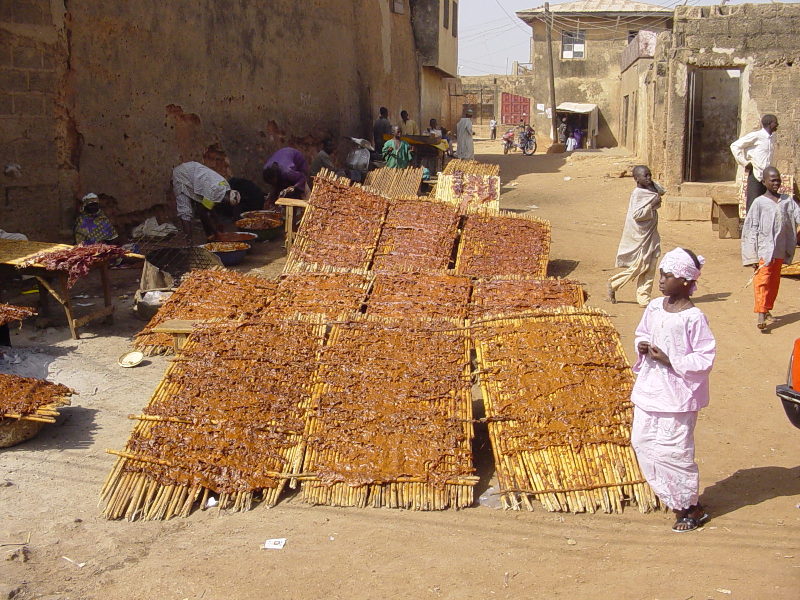
First of all, I have to say a big thank you to supersanusi, provider of this awesome kilishi.
I’d never taken note of how beautiful it was beforer. Previous experiences have seen me with bits and pieces of dried meat, wrapped in paper and sometimes in plastic packs to the point I thought it was like jerky, just bits of meat.
Seeing this awakens my mind again to the craftsmanship that’s at work here. To the skill, to the technique.
Each piece, sheet of meat is almost of uniform thickness, not easy when you consider the rubbery nature of fresh meat and the thickness. To see it ‘beaten’, like metal and in a gross sense filigree’d is sumthin.
Kilishi is thought to have originated from a community of farmers and butchers, skilled like their brothers of suya fame. Made from lean cuts of beef, goat and lamb, it is cut, pounded and covered in some kind of yaji, the peanut dry rub.
I love the FAO’s summary on meat preservation:
… (Nigeria and other arid or semi-arid zones of West Africa)
Kilishi is a product obtained from sliced lean muscles of beef, goat meat or lamb and is made on a large scale under the hot and dry weather conditions prevailing from February to May. It is produced by sun-drying thin slices of meat…Connective tissue and adhering fatty material are trimmed off the meat which is cut with a curved knife into thin slices of about 0.5 cm thickness, 15 cm length and as much as 6 cm width.Traditionally, the slices of meat are spread on papyrus mats on elevated platforms or tables in the sun for drying. However, these papyrus mats may lead to hygienic problems, especially after repeated use. Therefore, easily washable corrosion-free wire nets or plastic nets are recommended for horizontal drying. The vertical drying method is also recommended in this case
In the first stage of drying, which takes two to six hours, the moisture of the meat slices has to be reduced to about 40 to 50 percent. The slices are then put into an infusion containing defatted wet groundnut cake paste or soybean flour as the main component (about 50 percent), and is further composed of water (30 percent), garlic (10 percent), bouillon cubes (5 percent), salt (2 percent) and spices such as pepper, ginger and onion. The “dried” slices of meat should absorb the infusion up to almost three times their weight.
After infusion, the wet product is again exposed to the sun to dry. Drying at this stage is much faster than at the first stage. When the moisture content of the slices has been reduced to 20 to 30 percent, a process which takes two to three hours depending on weather conditions and the dimensions of the product, the slices are finally roasted over a glowing fire for about five minutes. The roasting process helps to enhance desirable flavour development and to inactivate contaminating micro-organisms. Roasted kilishi is therefore superior in flavour to the unroasted version.
After roasting, the final moisture content ranges between 10 to 12 percent. It will decrease during storage at room temperature to as low a level as 7 percent. When packaged in hermetically sealed, low density plastic bags the product remains remarkably stable at room temperature for a period of about one year… Source: FAO
There, you’ll never be the same now you know your Kilishi isn’t just dried…but is roasted to finish.
Revel in the beauty of what your mind now knows about this wonderful gift…[wpurp-searchable-recipe]The Art, Science & Beauty of Kilishi – – – [/wpurp-searchable-recipe]

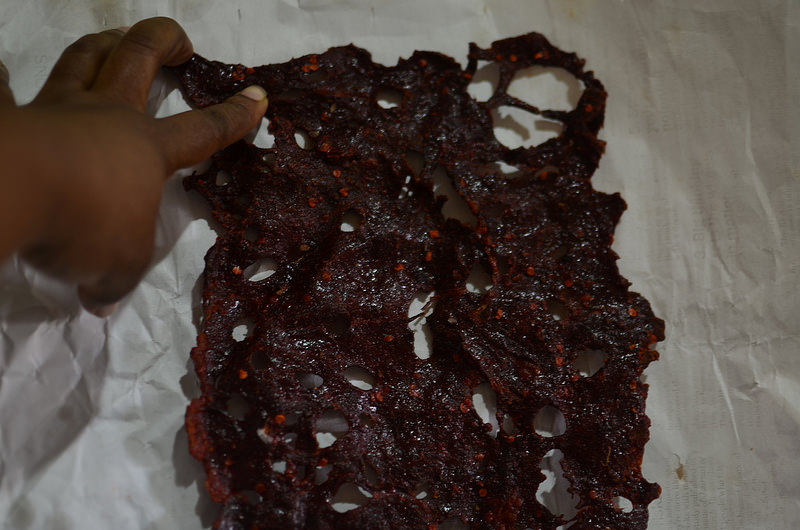
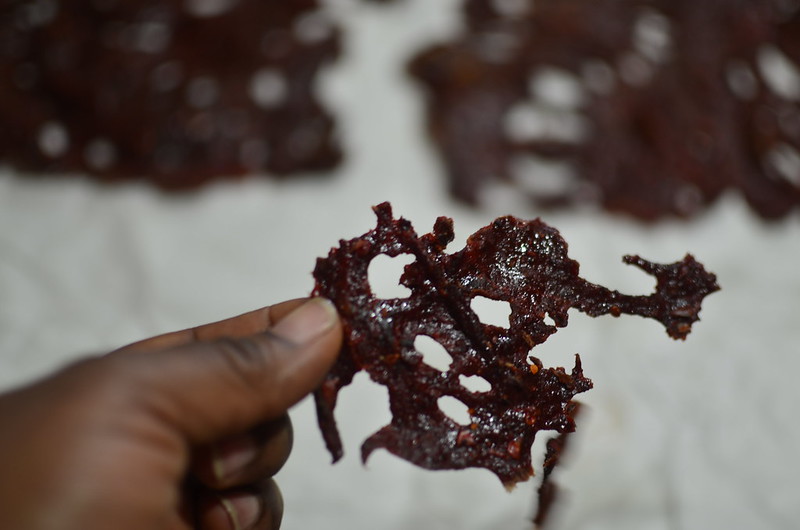
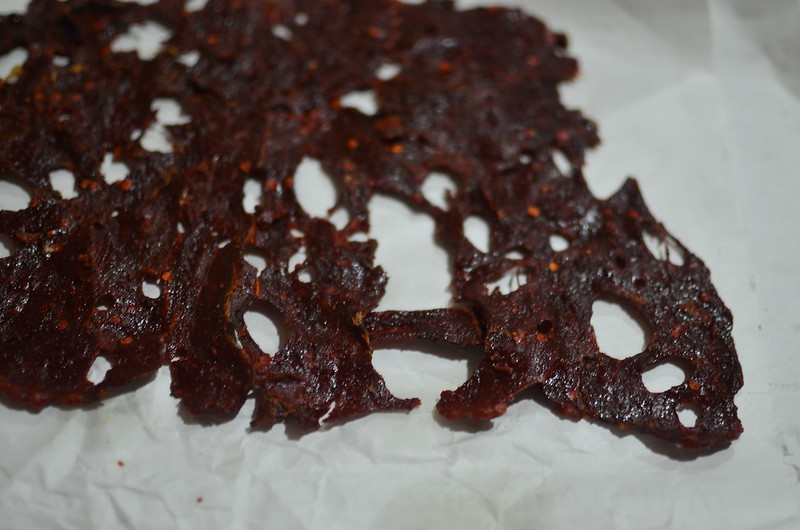
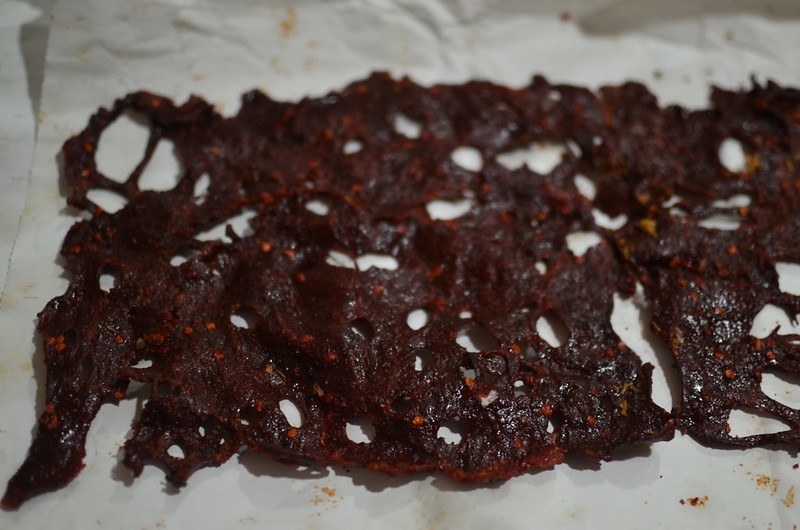
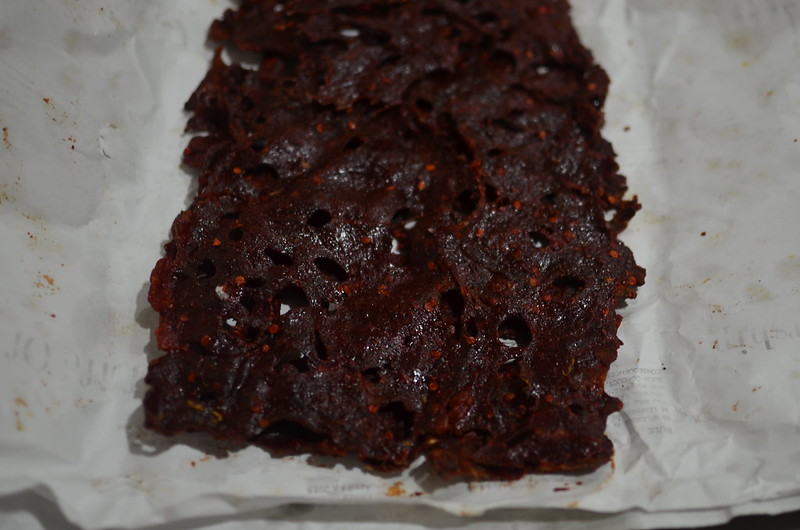
Leave a Reply